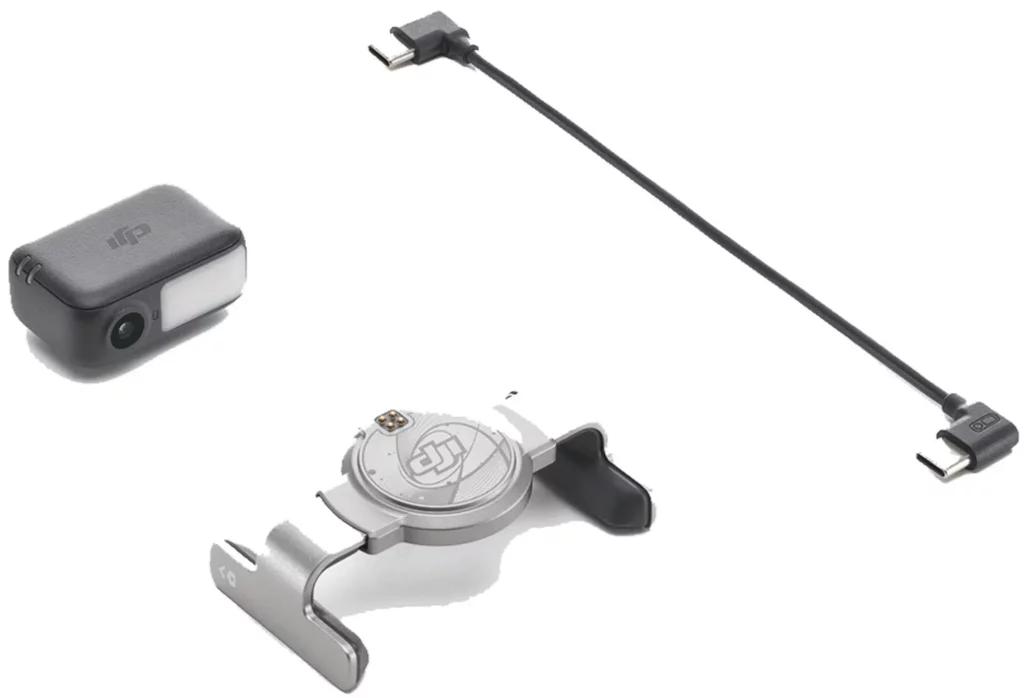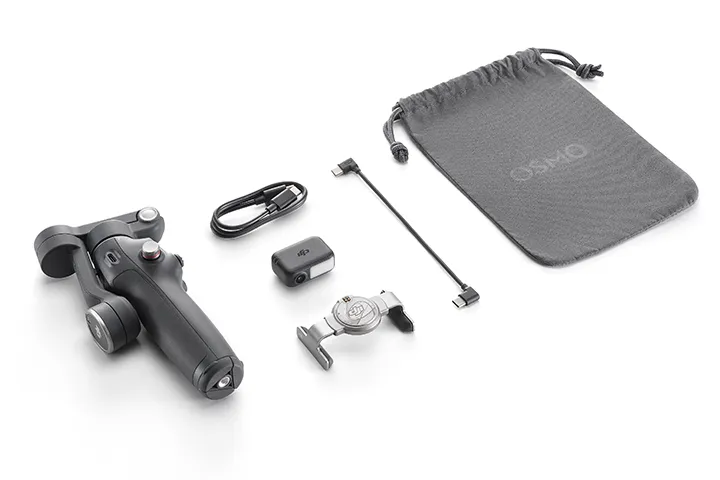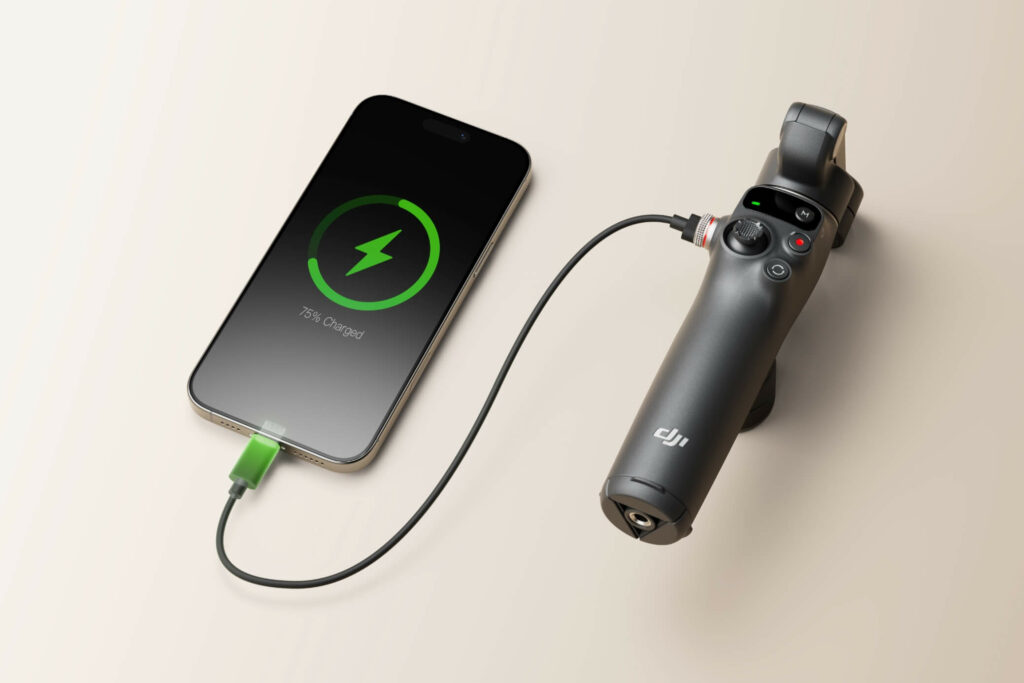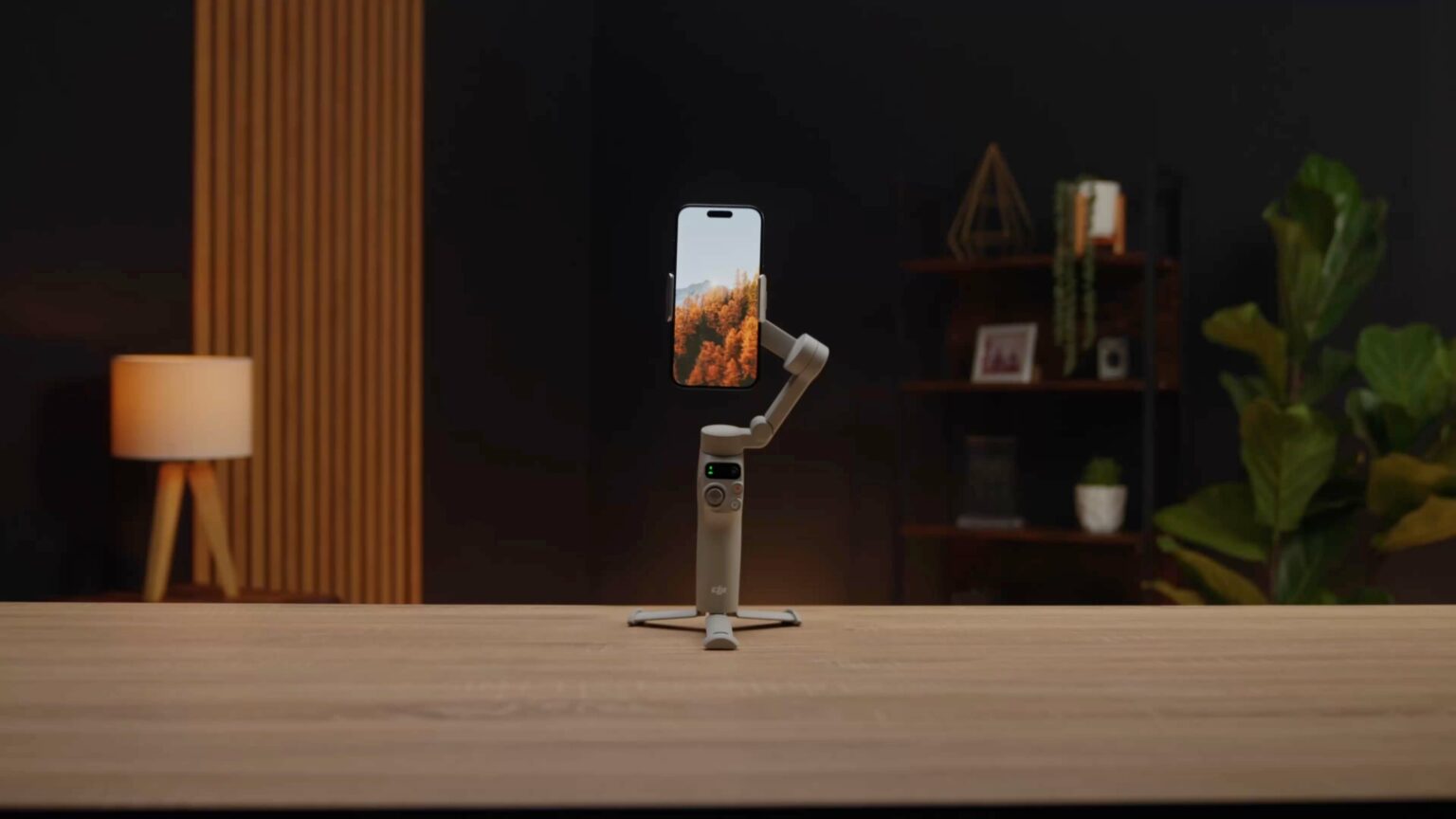With smartphones shooting 4K/60 straight out of pocket, stable footage is the last barrier to pro-looking content. Consequently, DJI’s Osmo Mobile 7 Pro (OM7 P) arrives with a bigger tool kit than any of its predecessors. We get ActiveTrack 7.0, a 215 mm extension rod, and—for the first time—a bi-colour LED that clips on and off. In this DJI Osmo Mobile 7 Pro review 2025 I tested the gimbal on street B-roll, wedding reels and seaside vlogs to see whether its $149 price tag really nails the sweet spot.

Design & First Impressions
First of all, the 7 P feels reassuringly dense without tipping the scales. At ≈368 g including the light module it is marginally lighter than Insta360’s Flow 2 Pro yet sturdier than DJI’s own OM 6. Moreover, the matte polymer shell—borrowed from the RS 4 Mini—shakes off fingerprints after humid shoots. Meanwhile, the built-in tripod legs and 215 mm rod slide out with zero flex, which boosts confidence when you’re waving the gimbal overhead.
Setup, Pairing & ActiveTrack 7.0
Pairing could not be simpler: tap an NFC-equipped iPhone once, and Bluetooth 5.3 hands off the rest. Within five seconds, the gimbal was ready. Furthermore, DJI’s new ActiveTrack 7.0 locked onto my subject even when a cyclist briefly blocked the frame. Although Insta360’s DeepTrack 4.0 recovers fractionally faster, the difference is negligible. More importantly, the tracking module works inside third-party apps such as TikTok or Zoom, so you’re not forced into DJI Mimo for every shot.

Gesture Control & Apple Watch Remote
Additionally, hand gestures (“palm” to record, “V” to stop) worked 9/10 times in bright sunlight. Meanwhile, the new Apple Watch widget lets you toggle panning speed or re-centre the phone, which feels genuinely futuristic when filming solo travel pieces.
Stabilisation & Motor Limits
During a 4 K/60 body-cam run through Vienna’s narrow alleys, footage from an iPhone 16 Pro Max plus Moment anamorphic lens (≈330 g) stayed silky. DJI rates payload at 170–300 g; nevertheless, motors tolerated another 20–30 g before micro-jitter appeared. Therefore, add-on ND filters are fine, but MagSafe power banks push the limit.
Extension Rod Creativity
The integrated rod now reaches 215 mm, which, in practical terms, means two extra torso lengths in selfie-mode. Consequently, crane-up café reveals or crowd-above shots happen without packing a separate stick. Unlike cheaper telescoping arms, the rod’s cross-section is oval, preventing twists mid-pan.

Bi-Colour LED Light
Because smartphone sensors still struggle in low light, DJI bolted a bi-colour 2 700–6 000 K LED on the tracker. At one metre, I measured ~100 lux—twice Flow 2 Pro’s output. Even so, max brightness cuts battery life almost in half, so I recommend 50 % power for nightly walking-vlogs.
Battery Life & Charging
DJI promises 10 h. My mixed-use day (70 % tracking, 40 % LED, occasional phone top-up) ended at 7 h 45 m—still respectable. Crucially, USB-C PD pumps the cell to 80 % in about an hour, so a lunch break covers you till sunset.

Software & Shooting Modes
Inside DJI Mimo, ShotGuides 2.0 recognises scenery and suggests B-roll angles. Meanwhile, Dynamic Framing automatically maintains rule-of-thirds composition as you walk—great for beginner influencers. Of course, classics like Timelapse, MotionLapse and SpinShot return, while Sport mode stiffens motors for fast subject tracking.
OM 7 Pro vs Main Rivals
| Spec | DJI OM 7 Pro | Insta360 Flow 2 Pro | Hohem iSteady M7 |
|---|---|---|---|
| Weight | 368 g | 369 g | 560 g |
| Rod Length | 215 mm built-in | 215 mm built-in | Optional |
| LED Light | Yes, bi-colour | Yes, bi-colour | Module doubles as LED |
| App-Free Tracking | Yes (module) | No | Yes |
| Launch Price | $149 | $159 | $199 |
Consequently, OM 7 P undercuts Flow 2 Pro while matching its signature tricks, and it beats Hohem on portability, although Hohem’s beefier motors handle heavier foldable phones.
Pros & Cons
Pros
- ActiveTrack 7.0 works across third-party apps
- Integrated rod and tripod—no add-ons needed
- Bright, colour-tunable LED
- Apple Watch remote and robust gesture controls
- Competitive $149 launch price
Cons
- Heavy phone + lens nudges motor limits
- LED halves battery at full power
- Learning curve for detachable tracker module
Who Should Buy It?
If you’re a mobile-first creator who shoots reels in multiple apps, OM 7 P’s app-agnostic tracker is a game-changer. Likewise, travel vloggers benefit from the rod reach and compact fold. Conversely, users strapping filters, lenses or MagSafe batteries may prefer Hohem’s stronger motors.
Final Verdict
Ultimately, DJI has smoothed nearly every rough edge left by OM 6. The Osmo Mobile 7 Pro folds smaller, tracks smarter, lights brighter—and, importantly, ships at an attainable price. Unless you run exotic phone rigs, OM 7 P is the most balanced smartphone gimbal in my bag for 2025.
Official Product Page: DJI Osmo Mobile 7 Series – Focus on Every Move
Check out the DJI Mobile 7 on Amazon
Related Guides:

